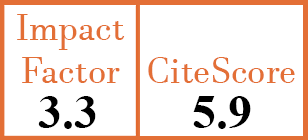Review
How HCV has changed the approach to mixed cryoglobulinemia
A. Della Rossa, C. Baldini, A. Tavoni, S. Bombardieri
CER458
2009 Vol.27, N°1 ,Suppl.52
PI 0115, PF 0123
Review
Free to view
(click on article PDF icon to read the article)
PMID: 19646357 [PubMed]
Received: 16/06/2009
Accepted : 18/06/2009
In Press: 02/12/2009
Published: 02/12/2009
Abstract
Mixed cryoglobulinemia is a systemic disease due to a small vessel immunecomplex mediated vasculitis. The discovery of a viral origin of the disease has launched a great expectancy among researchers and the years after this finding have been characterized by the effort to reach viral eradication in the hope of obtaining disease remission. Moreover, the use of immunosuppressives has been discouraged for many years as they could favour viral replication, and HCV infection has represented a contraindication to the more recent biological drugs directed against cytokines. The trials with antiviral agents in this disorder, however, has not met the expectations, especially when challenged with some of the most severe complications of the disease; moreover, these medications were not devoid of unexpected side effects, such as the occurrence of peripheral neuropathies. Since lymphoproliferation is one of the features of the disease, this has focused the attention of investigators on the potential benefit of newly targeted therapies specifically directed against B-lymphocytes (such as rituximab). Preliminary results on the use of these medications are promising. Furthermore, the use of biological agents in small open trials in HCV positive arthritis patients has demonstrated an acceptable safety profile. All these empirical observations should probably induce the scientific community to reconsider the therapeutical approach to HCV-related mixed cryoglobulinemia. Indeed, the use of aggressive chemotherapy treatments in the era preceding HCV discovery has not been associated with significant liver toxicities and standard chemotherapy during HCV-related lymphoma carried out a unexpected low rate of severe liver damage. Future efforts should probably focus on the potential benefit of a multi-step, combined anti-viral and cytotoxic therapy (both with standard regimens and new medications).


